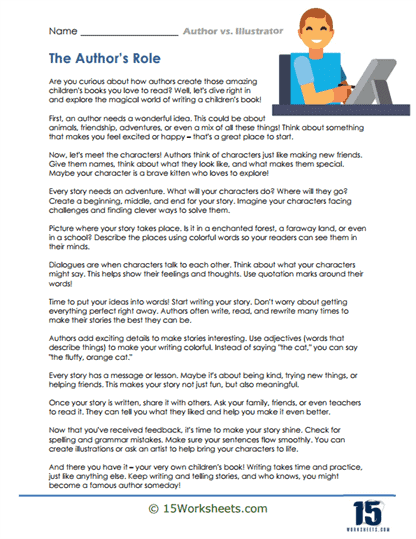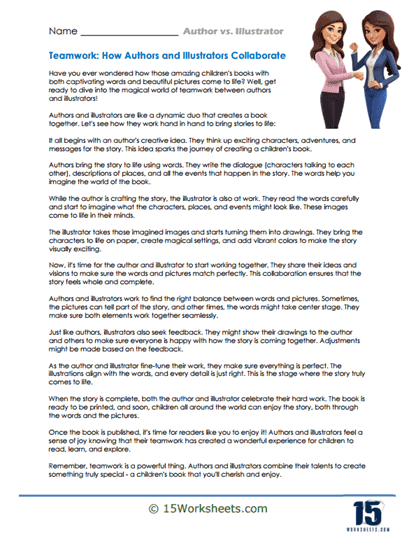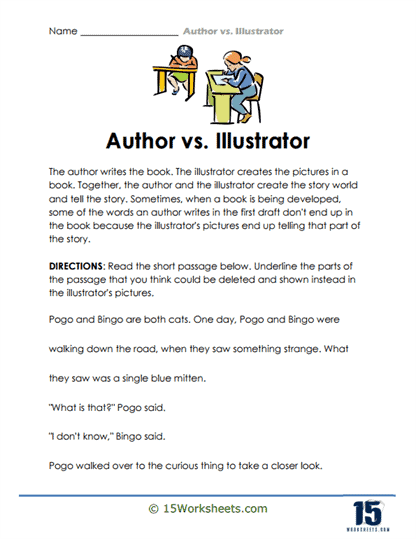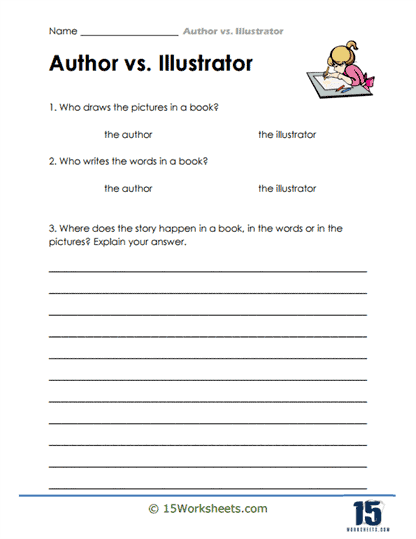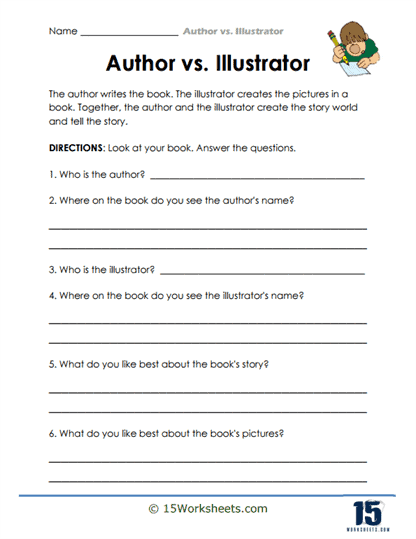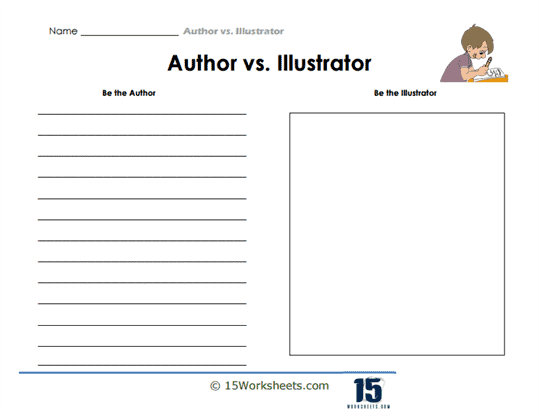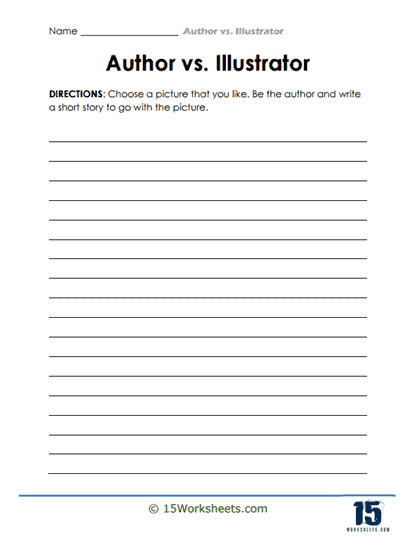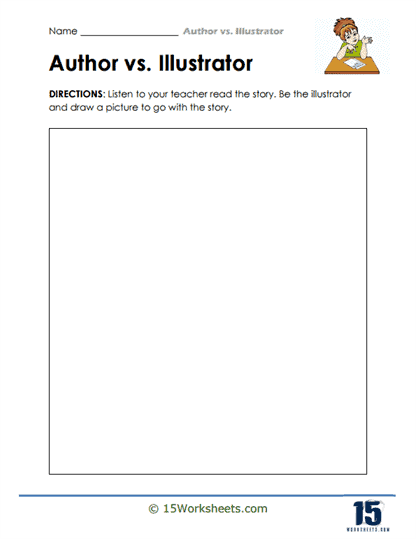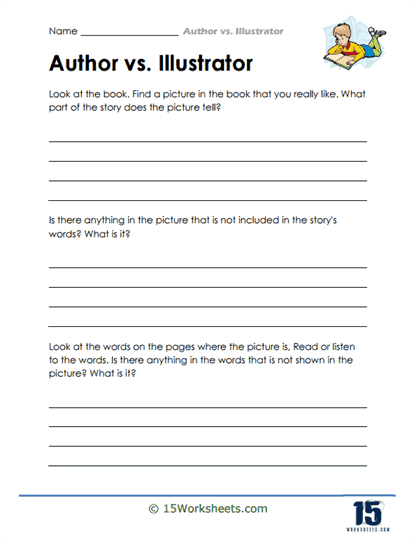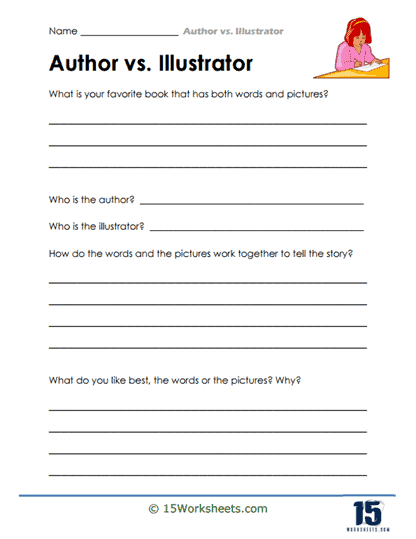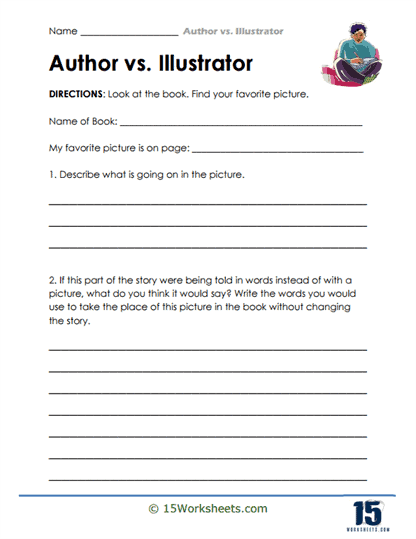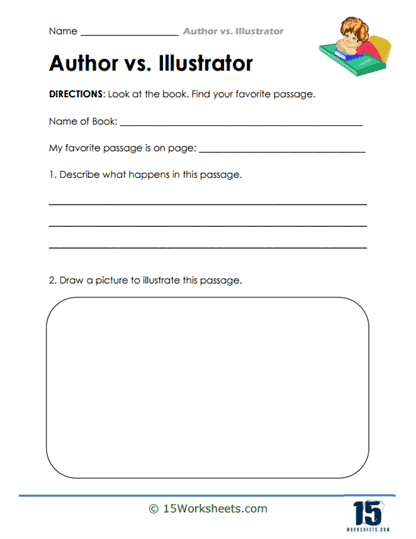Author and Illustrator Worksheets
About These 15 Worksheets
Do you love reading books and looking at all the beautiful pictures inside them? Well, every book has special people who make them. There’s an author who writes the words and an illustrator who draws the pictures. To learn more about these amazing people and what they do, we use something called ‘Author and Illustrator Worksheets’. Let’s dive into this exciting world!
Imagine you have a fun puzzle or activity sheet all about books, the people who write them, and the ones who draw for them. These sheets help you learn about the magic behind every book, understand the difference between authors and illustrators, and even make you think like one!
The Different Activities on These Worksheets
Matching Games – This is like playing detective! You might see a list of authors and a list of book titles. Your job is to match which author wrote which book. Similarly, you might match illustrators with the books they drew pictures for. This helps you know who created your favorite stories and pictures.
Fill-In-The-Blanks – Imagine a sentence like this: “_____ wrote ‘Green Eggs and Ham’.” You need to fill in the blank with the correct author’s name (Dr. Seuss!). This activity helps you remember the names of authors and the books they wrote.
Drawing Time – Some worksheets might ask you to be the illustrator. You might read a short story or sentence and then draw a picture to match. This is fun and helps you understand how illustrators think about the words they read.
Story Creator – Now, it’s time for you to be the author! You might get a picture and need to write a short story or sentence about it. This lets you think about how authors come up with their exciting stories.
Spot the Difference – You might see two pictures that look almost the same, but with tiny differences. Your job is to find them. This makes you pay attention to details, just like an illustrator would.
True or False – This game will give you statements like “Authors write words” or “Illustrators build houses.” You’ll mark if it’s true or false. It helps you remember what authors and illustrators do.
Reading Comprehension Passages – They ensure that students aren’t just skimming through texts but are actively engaging and understanding what they read. Every reading comprehension worksheet starts with a passage. After the passage, there are questions related to what was read. These questions aim to check if the student understood the main idea, details, and the underlying meanings or inferences of the passage.
How Do These Activities Help You?
Knowing the Difference – By doing these activities, you’ll quickly learn the difference between an author and an illustrator. Remember, the author writes the words, and the illustrator draws the pictures.
Becoming a Little Author or Illustrator – When you write your own stories or draw your own pictures, you think like authors and illustrators. This helps you understand how they feel when they create books.
Appreciating Books More – Once you know how much hard work goes into writing and drawing, you’ll see your books in a new, special way.
What is the Author’s Role In Creating a Book?
At the heart of any book lies its story, its essence, its soul. This is the realm of the author. The author is the storyteller, the dreamer, and the voice that guides the reader through the labyrinth of pages.
Before the first word hits the paper, the author spends a considerable amount of time conceptualizing. This involves brainstorming ideas, thinking of character arcs, settings, conflicts, and resolutions. The concept might stem from personal experiences, observations, or even pure imagination.
Particularly for non-fiction or historically accurate fiction, authors delve deep into research. They might visit locations, read multiple books on the subject, or conduct interviews. This is to ensure the authenticity and reliability of their content.
With an idea in hand, the author embarks on the journey of writing. This is where thoughts, feelings, and imaginations take the form of words. It’s a meticulous process that involves choosing the right words, crafting sentences, building tension, and developing characters.
An author’s work is not done once the story is written. There’s editing, where they go back and refine their work. Sometimes, entire sections are rewritten to better fit the narrative.
If the book is to be illustrated, the author often collaborates with the illustrator. They discuss scenes, character looks, and the overall visual tone to ensure the images align perfectly with the narrative.
What is the Illustrator’s Role In Creating a Book?
If the author lays the foundation and constructs the framework with words, the illustrator fills in the colors, textures, and nuances with illustrations. Their role is pivotal in books where visuals play a significant role, such as children’s books, graphic novels, and certain non-fiction works.
Before sketching, the illustrator immerses themselves in the author’s world. They read the manuscript, grasp the tone, understand the characters, and sense the emotions.
With a clear picture in mind, the illustrator begins with rough sketches. These are initial drafts or outlines that set the stage for detailed illustrations.
Illustrators choose the medium that best captures the essence of the story. This could be watercolors, ink, digital tools, or a combination of various media.
Based on feedback and the initial sketches, the illustrator creates detailed, final illustrations. These are rich, vivid, and resonate with the story’s emotions and moods.
The illustrator works closely with the author, taking feedback, understanding their vision, and sometimes suggesting visual elements that might enhance the story.
Especially in picture-heavy books, the illustrator might work with designers to decide the layout, ensuring the text and visuals blend harmoniously.
When authors and illustrators come together to produce a book, it’s akin to a symphony. The author’s words set the rhythm and melody, crafting a world with its highs and lows, its crescendos and silences. In parallel, the illustrator adds layers of harmony, with colors, shades, and images that dance along with the narrative, enhancing and elevating the experience.

